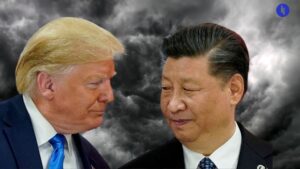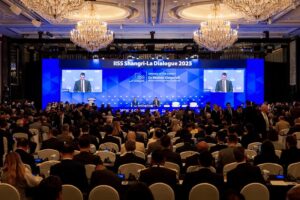The ISEAS – Yusof Ishak Institute, a Singapore think tank, just dropped its annual State of Southeast Asia survey. It’s an intriguing read that captures the vibe of officials, journalists, businesspeople, and experts across the ten countries in the region’s key bloc (the Association of Southeast Asian Nations, or ASEAN).
Here are the report’s four numbers you need to know, and why.
- 50.5% – Siding with China
This is the percentage of folks who, if forced, now say they’d side with China over the US. It’s the first time China has ‘beaten’ the US here (by 1%), and it’s a stark shift from last year when the US led China by a comfortable 22%. That’s why you might’ve seen some ‘China is winning in Southeast Asia’ headlines this week.
Stay on top of your world from inside your inbox.
Subscribe for free today and receive way much more insights.
Trusted by 129,000+ subscribers
No spam. No noise. Unsubscribe any time.
So… what’s going on? A key point to remember is the “if forced” part of the question – only 8% of respondents say they actually want to choose sides at all. And some (like US ally the Philippines) remain staunchly pro-US.
But still, has something happened since last year to shift this dynamic so much? One possible factor is…
- 46.5% – The Hamas-Israel conflict
This is the proportion of folks who say the Israel-Hamas conflict is Southeast Asia’s top geopolitical concern – that’s more than, for example, the possibility of conflict at home over the South China Sea (which came second at 39.9%).
The Hamas-Israel conflict features most prominently (though not exclusively) in responses from Muslim-majority countries like Brunei, Malaysia, and Indonesia. And three out of four people in these countries also sided strongly with China (a supporter of Palestinian causes since Mao’s era) rather than the US.
But there’s another possible factor also driving China’s results this year…
- 38.2% – US absence
That’s the percentage of folks who say US efforts in Southeast Asia have now declined. And that’s interesting because, by many measures, the US has been more active lately, with increased joint military activities, new pacts with Vietnam and the Philippines, and a much-vaunted regional economic deal known as the Indo-Pacific Economic Framework (IPEF).
But the issue here could be quality, not quantity. For example, there’s been genuine disappointment over US absences from key regional summits in recent years, while the new economic deal (IPEF) hasn’t really delivered on what Southeast Asia clearly values most – more access to the world’s largest economy (the US).
Still, it’s not all rainbows and unicorns for China, either…
- 50.1% – China unease
That’s the segment of Southeast Asian respondents now voicing unease towards China. By way of comparison, only 37.6% feel the same way towards the US, which remains the region’s second-most trusted power after Japan.
What’s going on? Almost half now say they worry about China turning its might against them. And if you dig deeper, that fear is, unsurprisingly, most pronounced in countries like the Philippines and Vietnam who are already feeling China’s heat (or water cannons, to be precise) in the South China Sea.
So where does all that leave us?
It’s important not to over-index on these kinds of snapshots, which are still relatively small, time-bound, and capture a cohort that’s evolving each year.
But still… the above numbers should be enough to give the US, China, and others pause for thought as they vie for influence in one of the world’s most dynamic regions.
INTRIGUE’S TAKE
These kinds of studies can be useful as a straw in the wind, though this year’s report also seems to suggest the wind is now blowing in all directions at once. Eg, it suggests Southeast Asia could side with China if forced, yet the region also trusts the US more. And folks are optimistic about Southeast Asia’s ties with China, yet they’re somehow also distinctly uneasy about China, too.
To us, these are less about any polling problems, and more an authentic reflection of what is such a diverse region at a complex moment.
And the resulting picture offers three lessons for China, the US, and any other power now vying for regional influence. First, the prominence of the Hamas-Israel conflict is a reminder that politics isn’t always as local as we assume.
Second, ‘it’s [still] the economy, stupid’, with 58% of participants listing unemployment at home as their top concern.
But third, it’s a region that jealously guards its freedom to choose its own path, so there’s a balance between pursuing the first two lessons, without stumbling on the third. And no power is nailing that balance right now.
Also worth noting:
- The study suggests trust in the US has been declining, in part due to America’s distraction with internal issues (there’s apparently a US election this year?).
- The data shows more regional ambivalence towards India, suggesting its big 2023 (including as G20 host) hasn’t shifted perceptions yet.
- Two-thirds of respondents listed Singapore as the region’s own leader. As a small city-state on some of the world’s most critical sea lanes, it probably knows more than anyone the importance of a region and world built on rules.








